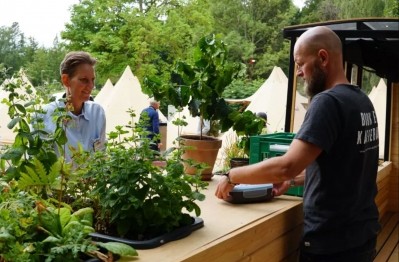Researchers brew up method to detect coffee adulteration

Arabica coffee trades at up to twice the price of Robusta due to taste and because Robusta plants are higher yielding and easier to grow.
Distinguishing between the two is difficult when they have been roasted and ground.
Identification relies on chemical analysis of different compounds in the coffee to get information about molecular composition of a sample.
The current standard analytical technique focuses on 16-O-methylcafestol (16-OMC) in Robusta but not Arabica. However, the method is expensive and takes three days.
High-field and low-field proton NMR spectroscopy
The method from Quadram Institute (formerly Institute of Food Research) researchers uses a benchtop NMR spectrometer from Oxford Instruments and reduces the time taken to process samples to 30 minutes.
To characterise the NMR fingerprint of Arabica and Robusta coffee, scientists worked with the Royal Botanical Gardens, Kew, who provided samples with a reliable provenance.
Using low-field (60 MHz) NMR was sensitive enough to detect 1% Robusta in an Arabica/Robusta blend.
“This is an important milestone for detecting fraud in coffee, as 1% is the generally accepted cut off between trace contamination, which might be accidental, and more deliberate adulteration for economic gain,” said Dr Kate Kemsley from the Quadram Institute, who led the research.
High-field NMR (600MHz) spectra were collected using a Bruker spectrometer.
Increased sensitivity via 2D 600 MHz NMR and LC-MS found 16-OMC and 16-O-methylkahweol (16-OMK) for the first time in Arabica roast coffee.
Ultra high performance liquid chromatography – time of flight mass spectrometry was with Waters instrumentation.
Chloroform was used to extract the lipophilic phase from a sample of ground roast coffee and was evaporated using a vortex evaporator and the residue dissolved in a smaller amount of relatively higher-cost deuterated chloroform.
This allows use of larger amounts of coffee and solvent in the extraction step, without the method becoming too expensive as a screening technique.
Technique used on real world samples
Quadram Institute researchers used the technique to find six of 60 ground roast coffee samples labelled as 100% Arabica contained significant levels of Robusta.
They had estimated non-Arabica contents ranging from 3% to 33%.
Researchers said this leads to an estimate of the sector-wide prevalence of between 5% and 20%.
“It was immediately obvious using our test that there were several suspicious samples, producing results that were consistent with the presence of substantial amounts of Robusta – far more than would be expected through unavoidable contamination,” said Dr Kemsley.
This affects the consumer who is paying a premium price for an inferior product.
It also affects producers as most coffee is grown by smallholders, mainly from developing countries.
Better surveillance will protect consumers and ensure farmers receive a fair price for their produce.
Research was funded by the Biotechnology and Biological Sciences Research Council (BBSRC).
Source: Food Chemistry
Volume 248, 15 May 2018, Pages 52-60
“16-O-methylcafestol is present in ground roast Arabica coffees: Implications for authenticity testing”
Authors: Yvonne Gunning; Marianne Defernez; Andrew D. Watson; Niles Beadman; Ian J.Colquhoun; Gwénaëlle Le Gall; Mark Philo; Hollie Garwood; David Williamson; Aaron P. Davis; E. Kate Kemsley
























